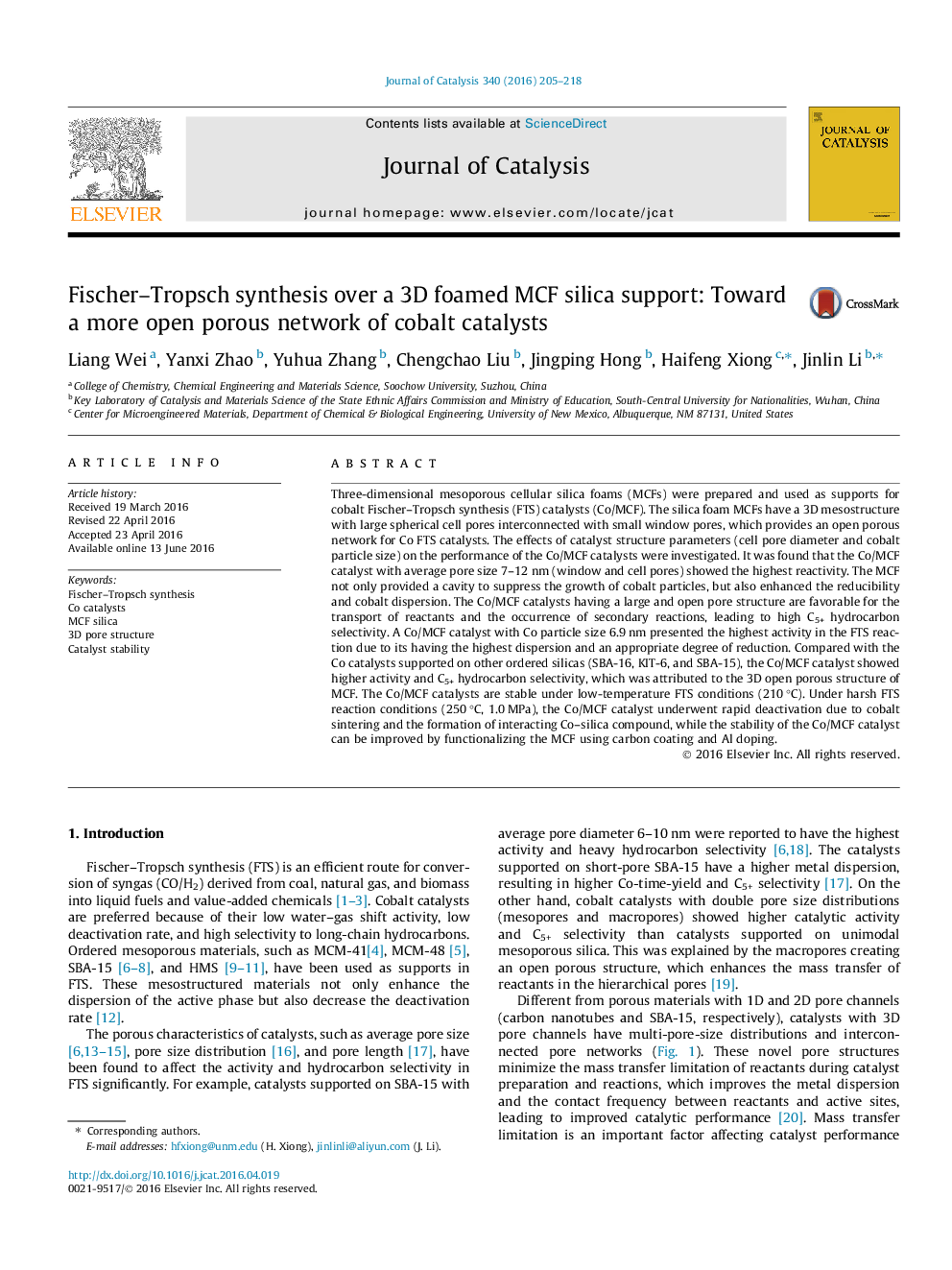| کد مقاله | کد نشریه | سال انتشار | مقاله انگلیسی | نسخه تمام متن |
|---|---|---|---|---|
| 60522 | 47535 | 2016 | 14 صفحه PDF | دانلود رایگان |

• Cellular silica foams (MCFs) with 3D mesostructure were prepared for cobalt catalysts (Co/MCF).
• Co/MCF with pore size 7–12 nm showed the highest reactivity in Fischer–Tropsch synthesis (FTS).
• A Co/MCF catalyst with Co particle size 6.9 nm presented the highest activity in the FTS reaction.
• Catalytic performances of Co/MCF was compared with that of Co/SBA-16, Co/KIT-6, and Co/SBA-15.
• Stability of Co/MCF can be improved by functionalizing MCF using carbon coating and Al doping.
Three-dimensional mesoporous cellular silica foams (MCFs) were prepared and used as supports for cobalt Fischer–Tropsch synthesis (FTS) catalysts (Co/MCF). The silica foam MCFs have a 3D mesostructure with large spherical cell pores interconnected with small window pores, which provides an open porous network for Co FTS catalysts. The effects of catalyst structure parameters (cell pore diameter and cobalt particle size) on the performance of the Co/MCF catalysts were investigated. It was found that the Co/MCF catalyst with average pore size 7–12 nm (window and cell pores) showed the highest reactivity. The MCF not only provided a cavity to suppress the growth of cobalt particles, but also enhanced the reducibility and cobalt dispersion. The Co/MCF catalysts having a large and open pore structure are favorable for the transport of reactants and the occurrence of secondary reactions, leading to high C5+ hydrocarbon selectivity. A Co/MCF catalyst with Co particle size 6.9 nm presented the highest activity in the FTS reaction due to its having the highest dispersion and an appropriate degree of reduction. Compared with the Co catalysts supported on other ordered silicas (SBA-16, KIT-6, and SBA-15), the Co/MCF catalyst showed higher activity and C5+ hydrocarbon selectivity, which was attributed to the 3D open porous structure of MCF. The Co/MCF catalysts are stable under low-temperature FTS conditions (210 °C). Under harsh FTS reaction conditions (250 °C, 1.0 MPa), the Co/MCF catalyst underwent rapid deactivation due to cobalt sintering and the formation of interacting Co–silica compound, while the stability of the Co/MCF catalyst can be improved by functionalizing the MCF using carbon coating and Al doping.
Figure optionsDownload high-quality image (74 K)Download as PowerPoint slide
Journal: Journal of Catalysis - Volume 340, August 2016, Pages 205–218